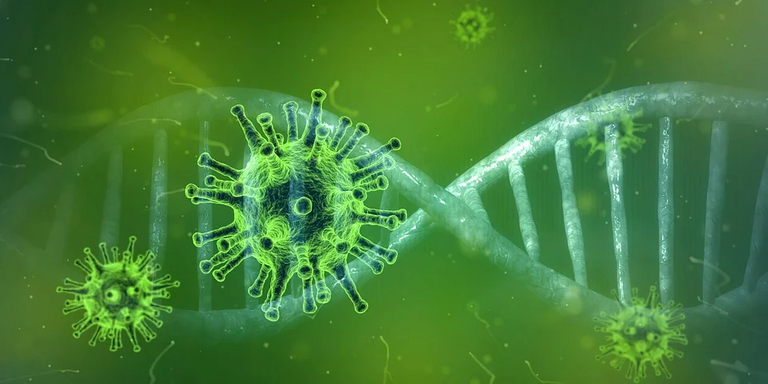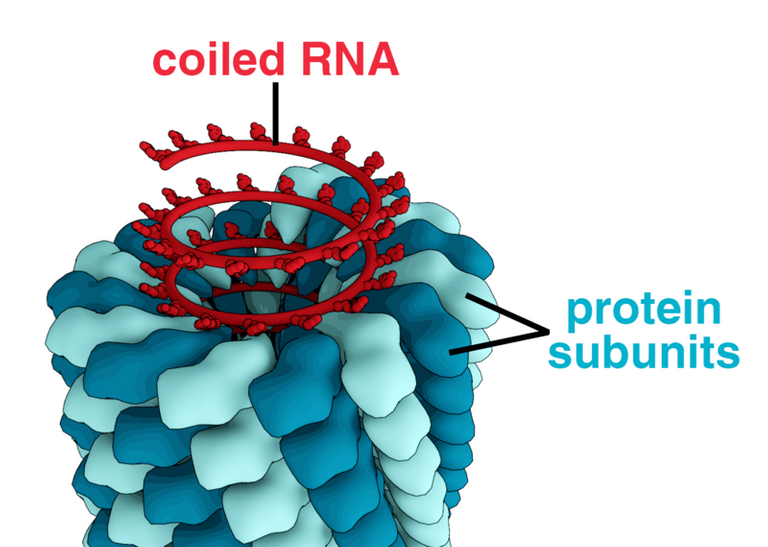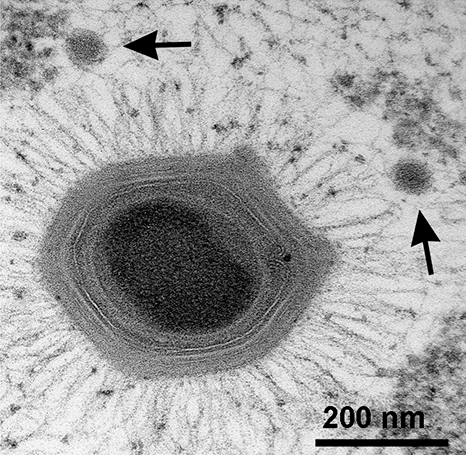VIRUSES: Understanding Their Simplicity & Complexity!!!

The year 2020 has been a unique year for every person on planet. A virus based pandemic has been the talk of the year which prompted me to try and find out a bit about these tiny organisms that have caused so much havoc to humans.
It is said that there are a lot of mysteries behind how viruses came to be in existence. Their remains have never been found in rocks because of how minute their sizes are and how fragile they are. They are even considered at times to not be alive. In the actual sense, they are simply pieces of protein and some genetic information known to cause certain types of illness in the body.
So what exactly is a Virus?

The virus is a simple entity which comprises either DNA or RNA enclosed in protein. Most are very small ranging in nanometers and some are actually quite big. They totally rely on a host to be able to survive and reproduce. There are claims that some of these viruses are as old as life itself is and they are not selective in choosing their hosts since they have been found to infect every form of life that exists or existed on earth. You’d be surprised to know that even Bacteria and Eukaryotes are not left out!
How then do these viruses function?
Well, for a virus to function, it has to infect a host’s cell to access the mechanism the host cell uses to replicate its DNA. The virus swoops in and ceases control of this mechanism. The virus then uses this particular mechanism to produce more viruses. These newly produced viruses are then released and they move out to infect other host cells and the chain continues. Quite selfish of them, don’t you think? ;)
Are these Viruses even Alive?
A constant debate is centered on whether Viruses can be classified as living organisms and actually be placed on the tree of life. It’s such an interesting debate that I’m sure you’ll find it equally amusing and I’ll like to know your take on the matter in the comment section below right after you finish reading through the article!
We should know that living organisms are organisms that can reproduce, evolve, produce energy ,maintain homeostasis, and much more. The thing about viruses however, is that they cannot reproduce on their own, and even though they can evolve, they cannot produce energy to maintain a stable internal environment!
This is basically what has caused the difference in opinions of scientists on whether viruses have life or not. So can we say they are semi-living organisms? Lol!
For how long have Viruses actually existed
Paleovirology can help us to understand the history of viruses, experts in the field of Genomics have to study the Genomes of the various hosts of these viruses. The genomes of these viruses are sometimes integrated into the genome of the host, and remain there for as long as possible (even indefinitely) if they don’t cause a damaging mutation of the host cell.
An interesting fact about these viruses is that their genomes can actually be passed down from one generation of the host organism to the subsequent generations. This happens if the infected host cell is a reproductive cell e.g. the sperm cells. This is what scientists exploit to understand the origins and history of viruses. The genomes integrated into that of the host’s cells actually serve as molecular bio-fossils.
Also, viruses are known to mutate quite fast such that within a span of 100 years, not much of a virus’ original genome may be left. But when the genome of a virus is well integrated into the host’s cell, it can only mutate at the same rate the host cell mutates. The hosts mutate at a much slower pace when compared to viruses due to the comparative slow rate at which hosts actually reproduce.
The points discussed above imply that genes of the viruses will be kept preserved in the host perfectly much longer than in the viruses found moving around. Scientists use these points to actually determine how old viruses are. This is done the exact way evolution of other genes have been studied.
If a sequence of viral DNA can be found in two separate organisms, the probability that they share a common ancestor is almost certain. In turn, the virus definitely will be as old as that ancestor. As an example, a type of virus found in dogs known to cause stomach issues, has also been found in cats and pandas making the existence of this type of virus about 68 million years!
A recent study on wasps showed that a virus named Bracovirus may have existed for over 310 million years. This dates back to when insects first came into existence during the Phanerozoic Eon. Another interesting study showed that a gene (CGIN1) can be traced back to when the evolution of mammals started i.e. around 125-180 Million years.
Although these types of preserved viral genes have been passed down to us as offspring and can be found in our DNA, they don’t really affect us as hosts. You’d be surprised to know that about 8% of our genomes contain sequences originally found in viruses.
Virologists came up with various models to describe how long along viruses must have existed. I’ll discuss a few briefly
Virus-First Model | Co-evolution Hypothesis
Scientists in this category suggest that viruses evolved even before cellular life did or at around the same time. To support the suggestion, viruses are known to be very simple in structure and as such probably existed when all forms of life were relics of simple self-replicating units and probably made of RNA.
Escape Hypothesis | Cellular Origin Hypothesis
Scientists in this school of thought suggest that viruses evolved after cells did. To support this, there are pieces in our genes that can copy and paste themselves which transfers them from one part of the DNA to another. This makes it possible for any of these pieces to get coated by protein and escape the cell to become viruses during the copy and paste procedure.
Regressive Model
Some scientists also suggest that viruses actually existed as free living organism and after a while, they started a symbiotic relationship with other forms of life. This symbiotic relationship later evolved into a more parasitic nature, making the viruses lose their complex cellular structure.
This was established based on the fact that a group of viruses named Mimiviruses which are relatively gigantic in size when compared to most viruses and are known to infect Amoebas, have certain genes that they use to make proteins but cannot reproduce without a host. It is suggested that these genes are actually leftovers from a period of time when certain viruses were more complex.

However, some scientists suggest that the extra genes found in Mimiviruses were actually picked up from their hosts over millions of years.
In conclusion, understanding viruses doesn’t seem as simple as their structures are, and classifying them as living organisms is still in debate. The obvious truth however, is that they do exist and some of them are responsible for various diseases in humans. I hope my article has given us a bit of an insight as to what viruses are.
The Coronavirus Pandemic (Covid-19) is one that will linger in our hearts forever and I guess the complexity in understanding the biology of viruses in general is a contributing factor to how understanding the Coronavirus has posed certain problems for researchers.
My heartfelt condolences go out to the families that have lost anyone to the pandemic. Also, I’d like to give a big shout out to the frontline health workers and everyone working to make things go back to the usual. Together, we all will get through these tough times hivers! Stay safe always and cheers!
You can FOLLOW ME for more awesome articles guys!
REFERENCES
CGIN1: a retroviral contribution to mammalian genomes
What is a virus? How do they spread? How do they make us sick?
Are viruses dead or alive?
Virus
Paleovirology
Mimivirus
BTW, do you know you can earn crypto by searching on Presearch? Google does not need to monopolize the search engine market. use this Sign Up Link and get free PRE tokens to kick start your journey
AS COMPOSED BY QUE

My Proof of Tweet
!discovery 20
This post was shared and voted inside the discord by the curators team of discovery-it
Join our community! hive-193212
Discovery-it is also a Witness, vote for us here
Delegate to us for passive income. Check our 80% fee-back Program
Upvoted by GITPLAIT!
Join our Community on Hive and Chat with us on Discord.
Thanks for your contribution to the STEMsocial community. Feel free to join us on discord to get to know the rest of us!
Please consider supporting our funding proposal, approving our witness (@stem.witness) or delegating to the @stemsocial account (for some ROI).
Thanks for using the STEMsocial app and including @stemsocial as a beneficiary, which give you stronger support.
Congratulations @mengene! You have completed the following achievement on the Hive blockchain and have been rewarded with new badge(s) :
You can view your badges on your board And compare to others on the Ranking
If you no longer want to receive notifications, reply to this comment with the word
STOPDo not miss the last post from @hivebuzz: